Menu
Spasmodic Dysphonia
Spasmodic dysphonia (SD) is a voice disorder that causes involuntary spasms or contractions of the vocal cords, interrupting speech and affecting the quality of a person’s voice.
The voice may sound broken, strained, or breathy depending on the type of SD. The two most common types of SD are the adductor type (ADSD), where the vocal cords close together too tightly during certain sounds, and the abductor type (ABSD), where the vocal cords spasm open during certain sounds. Although it can start at any time during life, SD seems to begin more often in middle-age. The disorder affects women more often than men. Onset is usually gradual with no obvious cause.
What are the Symptoms of SD?
Symptoms of SD can vary from mild to severe and may include:
- Gradual or sudden difficulty speaking
- Breaks in the voice during speech
- Increased effort with speaking
- Normal voice with non-speaking tasks, for example, when singing or laughing
css id:
What Causes SD?
Although the exact cause of SD is unknown, evidence suggests that SD involves an area at the base of the brain where involuntary muscle movement is regulated and is, therefore, neurological in origin. When this nervous system regulator does not work properly and produces incorrect signals, this may cause voice muscles to contract or relax more than they should or at the wrong time.
Researchers are examining different areas of the brain that may be involved, including the basal ganglia, which helps to regulate movement; the cerebellum, which helps to control balance; and the cortex, which initiates movement and recognizes sensation. There may also be a genetic relationship as genes have been identified in other forms of movement disorders known as dystonia.
css id:
What Are the Treatment Options?
Generally, an ENT (ear, nose, and throat) specialist, or otolaryngologist, and a speech language pathologist will perform a comprehensive exam, including a review of the patient’s medical history and symptoms and a visualization of vocal fold movement using a special camera called a flexible laryngoscope through the nose. The patient may be asked to read or repeat several phrases so the physician can assess different voice qualities (i.e., overall severity, breaks, roughness, strain, breathiness). SD is diagnosed by listening to the specific voice changes during these speech tasks and distinguishing it from other types of hoarseness, in addition to examining the larynx.
There is no cure for SD. Treatments are often focused on decreasing the spasms or by improving control of the associated symptoms. Specific treatment options depend on each patient but may include:
Botulinum toxin A injections—Botulinum toxin A (Btx A) is injected into the laryngeal muscles that control the opening (abduction) and closing (adduction) of the vocal cords. Btx A blocks nerve impulses at the muscle receptor site. This weakening of the injected muscle(s) is only temporary, varies from person to person, and is based on dosage, but the average duration of the effect is three to four months. Possible side effects are usually brief and include a breathy or whispery voice, difficulty swallowing, or pain/soreness at the site of injection. Commonly, Btx A injection to the vocal cords results in a period (approximately two months) of close-to-normal voice for many ADSD patients. Btx A is the most reliable and thoroughly evaluated treatment for SD.
Voice therapy—Voice therapy cannot cure SD, but with the help of a speech language pathologist patients may be able to learn how to readjust breathing patterns, phonation, resonance, and articulation to make their voice work more efficiently and to better manage symptoms, such as breaks, strain, roughness, and breathiness. Voice therapy should incorporate individual goals, such as strategies for speaking in groups, speaking on the phone, speaking with less effort, and managing quality of life issues associated with SD.
Surgical options—Several surgical options have been used to try to treat SD, yet surgery for SD remains a controversial topic. Most procedures are designed to treat ADSD. In Type II Thyroplasty surgery, the surgeon separates the vocal cords slightly to reduce the severity of spasms, which can result in a weaker or breathier voice. Another procedure, called Selective Laryngeal Adductor Denervation-Reinnervation (SLAD-R), involves cutting the nerves to the vocal cord muscles and reinnervating those muscles with a different nerve. Long-term studies have not been published on the results of these surgeries for SD.
css id:
What Questions Should I Ask My Doctor?
- What caused my spasmodic dysphonia?
- How is spasmodic dysphonia diagnosed?
- Is spasmodic dysphonia genetic?
- Will I have this for the rest of my life? Will my voice get worse with time?
- Can I retrain my voice to sound like it used to sound?
- What are the best treatment options for me and my form of SD?
- Is BOTOX® an option for me, and what are the possible side effects? How long and how often will I need additional injections?
.
Note: This article was prepared in coordination with the National Spasmodic Dysphonia Association.
Copyright 2025. American Academy of Otolaryngology–Head and Neck Surgery Foundation.
Copyright 2022. American Academy of Otolaryngology–Head and Neck Surgery Foundation. Last reviewed July 2019.
Disorders that affect our ability to speak and swallow properly can have a tremendous impact on our lives and livelihoods. ENT specialists treat sore throat, infections, gastroesophageal reflux disease (GERD), throat tumors, airway and vocal cord disorders, and more.
Related Be ENT Smart Articles
The information on ENThealth.org is provided solely for educational purposes and does not represent medical advice, nor is it a substitute for seeking professional medical care.
Get the Care You Need
Find an ENT
Think you need to consult an ENT specialist? Find someone with the expertise and location that’s best for your needs.
Be ENT Smart
Learn how to stay ENT healthy, prevent problems, and manage existing conditions to improve your, or a loved one’s, daily life.
About ENThealth.org
Find out more about the community of physician experts who can help you to Be ENT Smart and how the information was developed.
Copyright 2025. American Academy of Otolaryngology–Head and Neck Surgery Foundation

